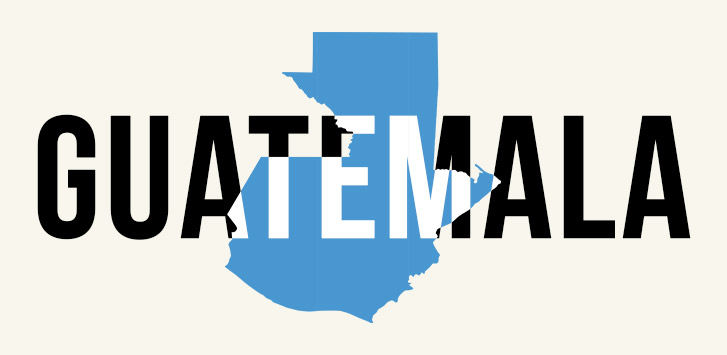
It goes without saying that coffee is acidic, and that’s part of its charm. The warm, stinging bite in the morning perks us up allowing us to face the day head-on. However, people who have acid reflux, GERD, and other stomach issues often find themselves at odds with their cup of coffee. Exacerbating their health ailments and making it nearly impossible to enjoy their cup of coffee.
Sadly, when one searches “low acid coffee” one is bombarded with options of various brands and which ones are “the best”. And while that is fine and ok for most coffee drinkers, we at Coffee Bean Corral aren’t most coffee drinkers. We take our coffee seriously rather than just simply buying some pre-roasted grounds for your drip brewer.
The question remains though. Which coffee beans are the less acidic and how can you fully enjoy them without causing issues? In this article, we will dive into some of the ways to achieve a low acid coffee with simple green coffee beans, roasting suggestions, and a few insider brewing tips so you can enjoy your coffee in peace.
Acid vs Acidity
Before going further, we should lay out the difference between the type of acids we are talking about.
The organic acids present in coffee that prompts acid reflux and similar issues are related to its pH balance. How we measure this acidity is through the pH scale.
A pH scale simply measures the acidity or alkalinity of an aqueous solution (in our case coffee) on a scale between 0 to 14; with 0 representing the extremely acidic and 14 being very alkaline.
For some perspective, one’s natural stomach acid measures at around a 1, a cup of coffee around a 5, and water being a 7 on the pH scale.
Where the confusion lays is in what coffee enthusiasts and connoisseurs refer to “acidity” of a coffee’s flavor notes. To add more to the confusion the descriptor of “acidity” is used interchangeably with “bright”.
Both refer to the degree to which a coffee bean’s natural flavors are upfront and present during a tasting. You can find our full breakdown of coffee bean flavor profiles to choose from for our Coffee Bean Matrix.
However, the type of acidity our blog post is referring to is the pH of coffee and how to best reduce it through choosing a coffee bean that is not very bright, but also roasting and brewing methods as well.
Coffee Bean Type and Roasting Method Suggestions
Now for probably the most important part of making your morning cup of coffee less acidic is to achieve a proper roast. Off the bat, following our three tips should help you along in creating an enjoyable, low acid coffee you can drink in confidence.
- Avoid light roasting your coffee beans. Light roasted coffees naturally possess more caffeine as well as the characteristic acidity that comes along. Our goal is to avoid having acidity, so brewing a light-roasted coffee already is self-defeating.
- Ensure to roast your beans to medium to dark roast. The roasting types between medium to dark roasts often are found to lack the acidity that leads to related digestive issues present in light roasts while still maintaining the notes and overall flavor characteristics of the bean itself.
- Stick to Arabica beans exclusively, while avoiding Robusta beans entirely. Robusta beans have more caffeine present within them which is a common trigger for acid indigestion, acid reflex, and similar symptoms. Luckily, this tip is not hard to break, as most small batch and specialty coffees are arabica beans.
Our Top Coffee Beans Selections
Another key piece of the puzzle is selecting the right coffee bean to help achieve a low acid coffee, and there are quite a few to choose from! Let’s take a deeper look into a few of our top picks to better illustrate why.
Sumatran Coffee Beans

Grown in the fertile soil of the island nation of Indonesia, Sumatran coffee beans are defined by their wet-hulled processing as well as their nuanced flavor profiles which blends notes of earthiness, spicy-ness, an almost mushroom-like funkiness, and low acidity.
While wet hulling is known to mute a bean's flavor profile, this can be counter-acted with dark roasting Sumatrans to eliminate not only such flavor variance but also stamp out acidity, making this bean perfect for creating a coffee that won’t trigger flare-ups.
Learn More
Guatemalan Coffee Beans

The jewel of the Central American coffee industry, Guatemalan coffee is grown in almost perfect climate conditions which creates a world-class bean and is deservedly praised for its full body, complex flavor profile, and gentle acidity that has hypnotized the world over.
While grown in higher regions which does lead to an upfront brightness, dark roasting Guatemalan beans can subdue that and bring to the forefront tasting notes of chocolate, maple, and berries. All the while keeping the acidity low.
Learn More
Mexican Coffee Beans

Light-bodied yet flavorful, Mexican coffee has a rich history that starts with German and Italian coffee growers moving from Guatemala and South America to Mexico to continue to grow coffee. Like much of the Third World, Mexico suffered the side effects of globalization, a move towards more international coffees on the market, and privatization of public assets. All had a devastating effect on the Mexican coffee industry.
But like most coffee beans in Central and South America, Mexican coffee has experienced a renaissance, and its subtle flavors of vanilla, lemongrass, jasmine, and bergamot offering a unique drinking experience to a new generation of coffee enthusiasts. Its light body and low acidity make it a perfect candidate to roast for a low acid coffee.
Learn More
Brazilian Coffee Beans

At one point in time, Brazil provided nearly all the world’s coffee, however, it was simply quantity over quality. Since the early 1990s Brazilian coffee exports have reached a new pinnacle of high quality and are now finding their way back into cafes, shops, and espresso cups the world over.
Generally, Brazilian beans are very well rounded with a full body and intense sweetness due to Brazil’s preference for growing robusta beans. The key here is that nearly all the Brazilian varietals possess a low acidity and take well quite well to dark roasting.
Learn More
Ethiopian Coffee Beans

One of the world’s best places to source coffee beans from, Ethiopia has a long and rich tradition of coffee cultivation. It has a variety of coffee beans that come from all over the country, each with its distinctions and unique characteristics.
Often, Ethiopian beans are processed traditionally, while yields a very bright acidity, so when checking out this specialty coffee bean, we suggest buying beans from the Limu region which often has low acidity while having wine-like and spicy characteristics.
We also suggest roasting them low and slow until the first crack which you can then gradually increase the temperature until you reach a dark roast, as Ethiopians are notoriously finicky during the roasting process.
Learn More
Colombian Coffee Beans

Blessed with a near-perfect climate for coffee growing, by the 1930s Colombia became the second-largest coffee exporter in the world after Brazil. However, by the 1990s, the Colombian coffee industry nearly collapsed due in part unfair labor practices and the ripple effects of globalization.
More recently, people have rediscovered Colombian coffee. These beans are characterized by their sweetness, lightness, and extreme brightness at light roasts. That being said, the Colombian coffee bean is adaptable at every roast level with different flavors taking to the forefront.
Since we are working near dark roasts to achieve a cup of coffee that is low in acidity. At that roast level, Colombians intensify their flavors of chocolate, caramel, fruity notes, while the acidity gets toned down. Just what we are looking for!
Learn More
Preferred Brewing Methods for Low Acid Coffee
Now that we have given you a few pointers on which coffee beans you should stick to as well as a few roasting tips, we finally arrive at the brewing process. Just like roasting, we advise these three broad points.
- For a coffee with low acidity, brewing cold brew is the way to go. Brewing cold brew is a relatively easy brewing process (even if you must wait a day or so). Cold brew’s steeping time not only mellows out the flavor of a bright coffee bean also creates a smoother cup of coffee that isn’t as acidic as dripped brewed or pour-over coffee.
- Including additives like coffee creamers or milk can dilute the coffee, lessening its overall acidity. Diluting your coffee down weather by including milk, store-bought, or homemade coffee creamer can lessen coffee’s natural acidity and when combined with a cold brew, it’s almost an unbeatable combination.
- If you plan on drip brewing or making a pour-over, adding eggshells to the coffee grounds cuts down on their acidity. While it almost sounds like an old wife’s tale, it’s true. Eggshells are a natural source of calcium and have been used to reduce soil acidity for thousands of years but can also be sprinkled in with coffee grounds impart no additional flavors while diluting the bean’s natural acidity. Just making sure to dry them out before adding them to your coffee grounds.
Now armed with a few pointers, you can now enjoy coffee without having to worry about its acidity causing unwanted acid reflux or worse. Whether you have health issues or not, you can even try out these insider tricks for a less acidic cup overall too!